#fantasy historical fiction
Text
Beautiful book alert!!
By chapter one, I was enchanted.
“Nothing changes, Vasya. Things are, or they are not. Magic is forgetting that something ever was other than as you willed it.” Haunting…a gorgeous coming of age story.
This is inspired by Slavic folktales. “I would walk into the jaws of hell itself, if it were a path of my own choosing. I would rather die tomorrow in the forest than live a hundred years of the life appointed me.”
Five stars!!!!
I kind of wish I’d found this in the colder months.
Anyways, you’ve all heard of it, but I’m finally reading this series.
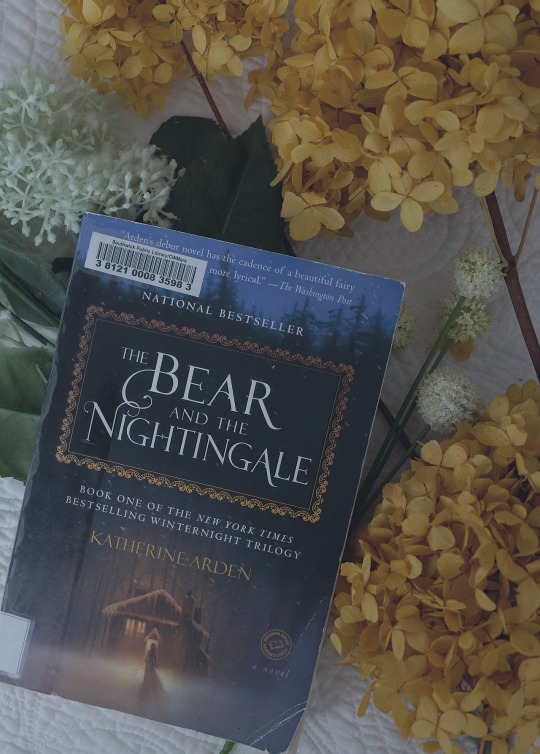
#pagan#witchblr#witches of tumblr#witchy#witchy books#witch books#booklr#mine#the bear and the nightingale#katherine arden#fantasy historical fiction#young adult#taking good care of yourself#mental health#healyourself#books and libraries#book talk#book review#booksbooksbooks#best seller books#selflove
27 notes
·
View notes
Text
One of my biggest nitpicks in fiction concerns the feeding of babies. Mothers dying during/shortly after childbirth or the baby being separated form the mother shortly after birth is pretty common in fiction. It is/was also common enough in real life, which is why I think a lot of writers/readers don't think too hard about this. however. Historically, the only reason the vast majority of babies survived being separated from their mother was because there was at least one other woman around to breastfeed them. Before modern formula, yes, people did use other substitutes, but they were rarely, if ever, nutritionally sufficient.
Newborns can't eat adult food. They can't really survive on animal milk. If your story takes place in a world before/without formula, a baby separated from its mother is going to either be nursed by someone else, or starve.
It doesn't have to be a huge plot point, but idk at least don't explicitly describe the situation as excluding the possibility of a wetnurse. "The father or the great grandmother or the neighbor man or the older sibling took and raised the baby completely alone in a cave for a year." Nope. That baby is dead I'm sorry. "The baby was kidnapped shortly after birth by a wizard and hidden away in a secret tower" um quick question was the wizard lactating? "The mother refused to see or touch her child after birth so the baby was left to the care of the ailing grandfather" the grandfather who made the necessary arrangements with women in the neighborhood, right? right? OR THAT GREAT OFFENDER "A newborn baby was left on the doorstep and they brought it in and took care of it no issues" What Are You Going to Feed That Baby. Hello?
Like. It's not impossible, but arrangements are going to have to be made. There are some logistics.
#idk what to tag this#worldbuilding#writing fiction#historical fiction#fantasy#a real-life example: my dad (a pediatrician) was once entrusted with the care of a baby who was born with a rare condition#this was in a place without great hospital/medical access and anyway they were going to fly the baby over#and he specifically asked them to bring the mother and baby#they show up with baby and...the baby's uncle#and he was like. y'all. do you think I asked for the mom to come just for fun??? We don't have formula here. what is the baby going to eat?
37K notes
·
View notes
Text

all RIGHT:
Why You're Writing Medieval (and Medieval-Coded) Women Wrong: A RANT
(Or, For the Love of God, People, Stop Pretending Victorian Style Gender Roles Applied to All of History)
This is a problem I see alllll over the place - I'll be reading a medieval-coded book and the women will be told they aren't allowed to fight or learn or work, that they are only supposed to get married, keep house and have babies, &c &c.
If I point this out ppl will be like "yes but there was misogyny back then! women were treated terribly!" and OK. Stop right there.
By & large, what we as a culture think of as misogyny & patriarchy is the expression prevalent in Victorian times - not medieval. (And NO, this is not me blaming Victorians for their theme park version of "medieval history". This is me blaming 21st century people for being ignorant & refusing to do their homework).
Yes, there was misogyny in medieval times, but 1) in many ways it was actually markedly less severe than Victorian misogyny, tyvm - and 2) it was of a quite different type. (Disclaimer: I am speaking specifically of Frankish, Western European medieval women rather than those in other parts of the world. This applies to a lesser extent in Byzantium and I am still learning about women in the medieval Islamic world.)
So, here are the 2 vital things to remember about women when writing medieval or medieval-coded societies
FIRST. Where in Victorian times the primary axes of prejudice were gender and race - so that a male labourer had more rights than a female of the higher classes, and a middle class white man would be treated with more respect than an African or Indian dignitary - In medieval times, the primary axis of prejudice was, overwhelmingly, class. Thus, Frankish crusader knights arguably felt more solidarity with their Muslim opponents of knightly status, than they did their own peasants. Faith and age were also medieval axes of prejudice - children and young people were exploited ruthlessly, sent into war or marriage at 15 (boys) or 12 (girls). Gender was less important.
What this meant was that a medieval woman could expect - indeed demand - to be treated more or less the same way the men of her class were. Where no ancient legal obstacle existed, such as Salic law, a king's daughter could and did expect to rule, even after marriage.
Women of the knightly class could & did arm & fight - something that required a MASSIVE outlay of money, which was obviously at their discretion & disposal. See: Sichelgaita, Isabel de Conches, the unnamed women fighting in armour as knights during the Third Crusade, as recorded by Muslim chroniclers.
Tolkien's Eowyn is a great example of this medieval attitude to class trumping race: complaining that she's being told not to fight, she stresses her class: "I am of the house of Eorl & not a serving woman". She claims her rights, not as a woman, but as a member of the warrior class and the ruling family. Similarly in Renaissance Venice a doge protested the practice which saw 80% of noble women locked into convents for life: if these had been men they would have been "born to command & govern the world". Their class ought to have exempted them from discrimination on the basis of sex.
So, tip #1 for writing medieval women: remember that their class always outweighed their gender. They might be subordinate to the men within their own class, but not to those below.
SECOND. Whereas Victorians saw women's highest calling as marriage & children - the "angel in the house" ennobling & improving their men on a spiritual but rarely practical level - Medievals by contrast prized virginity/celibacy above marriage, seeing it as a way for women to transcend their sex. Often as nuns, saints, mystics; sometimes as warriors, queens, & ladies; always as businesswomen & merchants, women could & did forge their own paths in life
When Elizabeth I claimed to have "the heart & stomach of a king" & adopted the persona of the virgin queen, this was the norm she appealed to. Women could do things; they just had to prove they were Not Like Other Girls. By Elizabeth's time things were already changing: it was the Reformation that switched the ideal to marriage, & the Enlightenment that divorced femininity from reason, aggression & public life.
For more on this topic, read Katherine Hager's article "Endowed With Manly Courage: Medieval Perceptions of Women in Combat" on women who transcended gender to occupy a liminal space as warrior/virgin/saint.
So, tip #2: remember that for medieval women, wife and mother wasn't the ideal, virgin saint was the ideal. By proving yourself "not like other girls" you could gain significant autonomy & freedom.
Finally a bonus tip: if writing about medieval women, be sure to read writing on women's issues from the time so as to understand the terms in which these women spoke about & defended their ambitions. Start with Christine de Pisan.
I learned all this doing the reading for WATCHERS OF OUTREMER, my series of historical fantasy novels set in the medieval crusader states, which were dominated by strong medieval women! Book 5, THE HOUSE OF MOURNING (forthcoming 2023) will focus, to a greater extent than any other novel I've ever yet read or written, on the experience of women during the crusades - as warriors, captives, and political leaders. I can't wait to share it with you all!
#watchers of outremer#medieval history#the lady of kingdoms#the house of mourning#writing#writing fantasy#female characters#medieval women#eowyn#the lord of the rings#lotr#history#historical fiction#fantasy#writing tip#writing advice
29K notes
·
View notes
Text


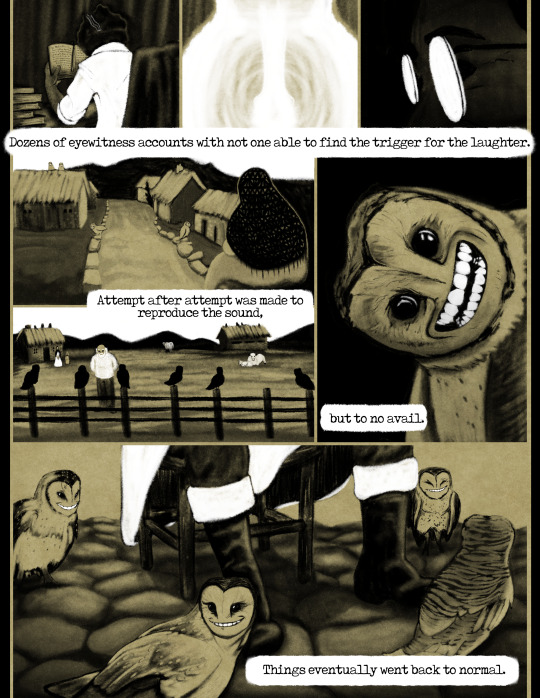
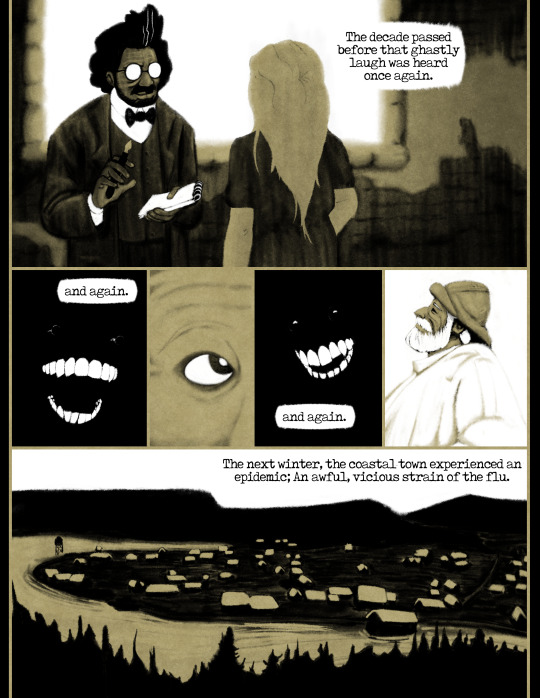
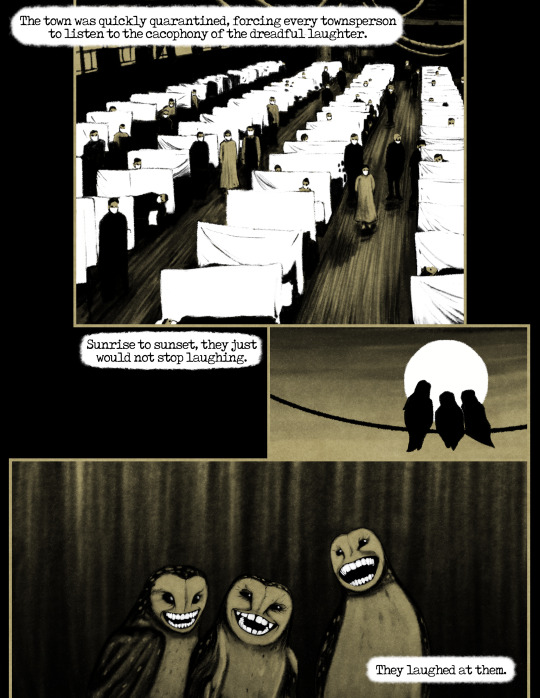
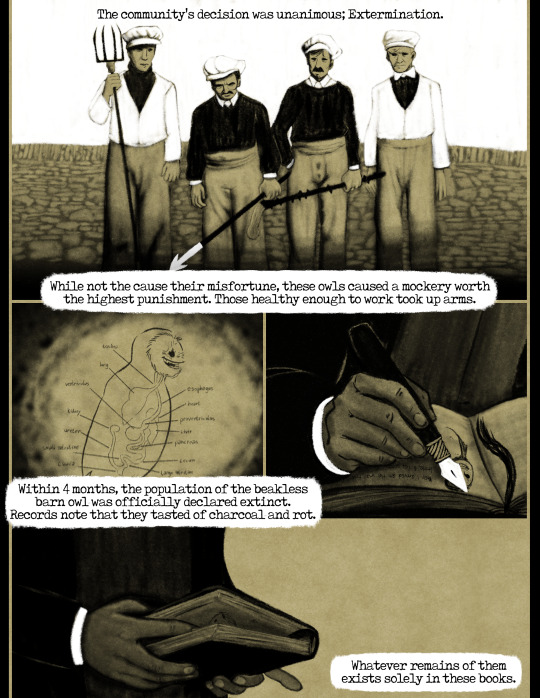
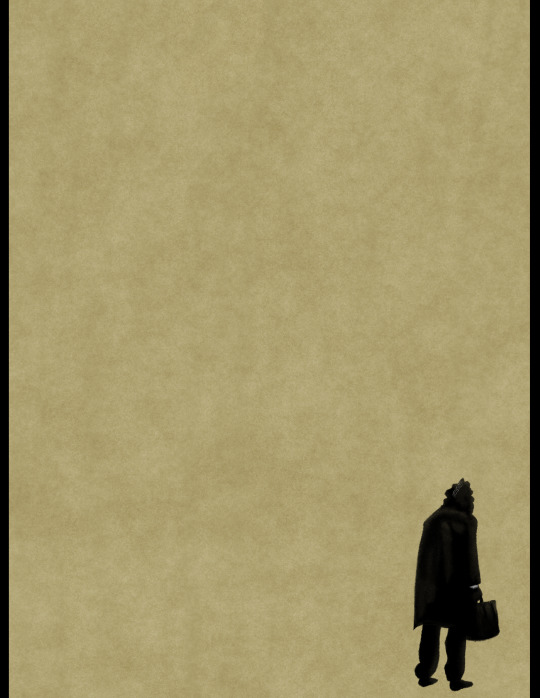
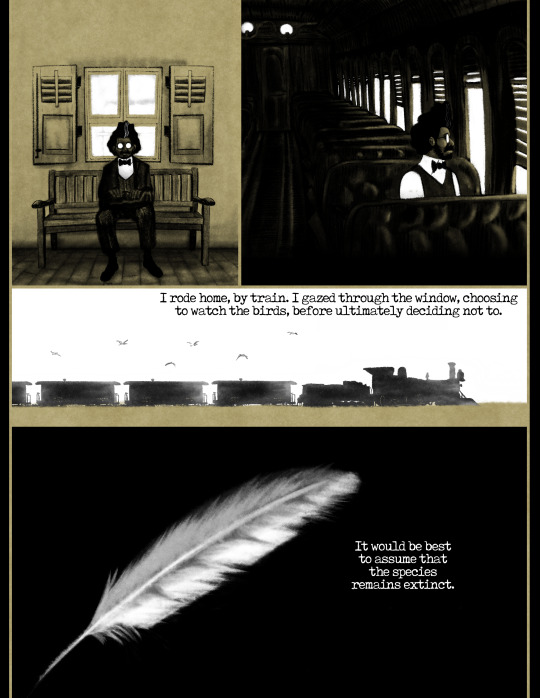
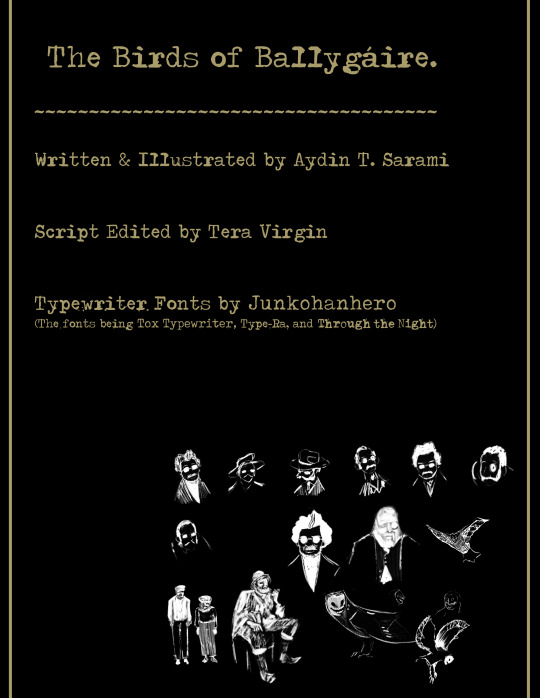
The Birds of Ballygáire.
thank you so much for reading. i appreciate it.
Special thanks to @terastrialbean for script editing & @junkohanhero for their wonderful typewriter fonts.
#oc#ocs#artists on tumblr#art#lovecraftian horror#lovecraft#horror#tyto alba#barn owl#bird#bird art#pendeedles#comic#comics#indie comic#indie comics#horror comic#teeth#irish horror#horror art#vintage#vintage horror#horror comics#indiecomics#dark fantasy#historical horror#historical fiction#illustrationartists#folk horror
1K notes
·
View notes
Text
PSA to all historical fiction/fantasy writers:
A SEAMSTRESS, in a historical sense, is someone whose job is sewing. Just sewing. The main skill involved here is going to be putting the needle into an out of the fabric. They’re usually considered unskilled workers, because everyone can sew, right? (Note: yes, just about everyone could sew historically. And I mean everyone.) They’re usually going to be making either clothes that aren’t fitted (like shirts or shifts or petticoats) or things more along the lines of linens (bedsheets, handkerchiefs, napkins, ect.). Now, a decent number of people would make these things at home, especially in more rural areas, since they don’t take a ton of practice, but they’re also often available ready-made so it’s not an uncommon job. Nowadays it just means someone whose job is to sew things in general, but this was not the case historically. Calling a dressmaker a seamstress would be like asking a portrait painter to paint your house
A DRESSMAKER (or mantua maker before the early 1800s) makes clothing though the skill of draping (which is when you don’t use as many patterns and more drape the fabric over the person’s body to fit it and pin from there (although they did start using more patterns in the early 19th century). They’re usually going to work exclusively for women, since menswear is rarely made through this method (could be different in a fantasy world though). Sometimes you also see them called “gown makers”, especially if they were men (like tailors advertising that that could do both. Mantua-maker was a very feminized term, like seamstress. You wouldn’t really call a man that historically). This is a pretty new trade; it only really sprung up in the later 1600s, when the mantua dress came into fashion (hence the name).
TAILORS make clothing by using the method of patterning: they take measurements and use those measurements to draw out a 2D pattern that is then sewed up into the 3D item of clothing (unlike the dressmakers, who drape the item as a 3D piece of clothing originally). They usually did menswear, but also plenty of pieces of womenswear, especially things made similarly to menswear: riding habits, overcoats, the like. Before the dressmaking trade split off (for very interesting reason I suggest looking into. Basically new fashion required new methods that tailors thought were beneath them), tailors made everyone’s clothes. And also it was not uncommon for them to alter clothes (dressmakers did this too). Staymakers are a sort of subsect of tailors that made corsets or stays (which are made with tailoring methods but most of the time in urban areas a staymaker could find enough work so just do stays, although most tailors could and would make them).
Tailors and dressmakers are both skilled workers. Those aren’t skills that most people could do at home. Fitted things like dresses and jackets and things would probably be made professionally and for the wearer even by the working class (with some exceptions of course). Making all clothes at home didn’t really become a thing until the mid Victorian era.
And then of course there are other trades that involve the skill of sewing, such as millinery (not just hats, historically they did all kinds of women’s accessories), trimming for hatmaking (putting on the hat and and binding and things), glovemaking (self explanatory) and such.
TLDR: seamstress, dressmaker, and tailor are three very different jobs with different skills and levels of prestige. Don’t use them interchangeably and for the love of all that is holy please don’t call someone a seamstress when they’re a dressmaker
#sewing#historical sewing#sewing knowledge#writing guide#PSA to writers#historical fiction#fantasy writing
701 notes
·
View notes
Text
A connection between two people existed only because of their shared belief in it as real. There was no such thing as a connection with only one end. There was no such thing as love, alone.
Shelley Parker-Chan, He Who Drowned the World
#Shelley Parker Chan#He Who Drowned the World#The Radiant Emperor#quote#fiction#historical fiction#fantasy#queerlit#2023 reads
1K notes
·
View notes
Text
All of these are at around the same power level. None of them look fully human, though some look more human than others. Sorted from eldest to youngest.
#196#my thougts#worldbuilding#fantasy#urban fantasy#my worldbuilding#writing#my writing#vampirism#vampires#vampyr#vampire#vampcore#history#historical fiction#polls#queer#monster lover
433 notes
·
View notes
Text
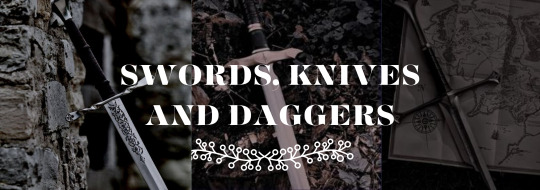
Writing Weapons (1): Swords
The Thrusting Sword
Type of fight scene: entertaining, duels, non-lethal fights, non-gory deaths, swashbuckling adventure
Mostly used in: Europe, including Renaissance and Regency periods
Typical User: silm, male or female, good aerobic fitness
Main action: thrust, pierce, stab
Main motion: horizontal with the tip forward
Shape: straight, often thin, may be lightweight
Typical Injury: seeping blood, blood stains spreading
Strategy: target gaps in the armous, pierce a vital organ
Disadvantage: cannot slice through bone or armour
Examples: foil, epee, rapier, gladius
The Cleaving Sword
Type of fight scene: gritty, brutal, battles, cutting through armour
Typical user: tall brawny male with broad shulders and bulging biceps
Mostly used in: Medieval Europe
Main action: cleave, hack, chop, cut, split
Main motion: downwards
Shape: broad, straight, heavy, solid, sometime huge, sometimes need to be held in both hands, both sides sharpened
Typical Injury: severed large limbs
Strategy: hack off a leg, them decapitate; or split the skull
Disadvantage: too big to carry concealed, too heavy to carry in daily lifem too slow to draw for spontaneous action
Examples: Medieval greatsword, Scottish claymore, machete, falchion
The Slashing Sword
Type of fight scene: gritty or entertaining, executions, cavalry charge, on board a ship
Mostly used in: Asia, Middle East
Typical user: male (female is plausible), any body shape, Arab, Asian, mounted warrior, cavalryman, sailor, pirate
Main action: slash, cut, slice
Main motion: fluid, continuous, curving, eg.figure-eight
Shape: curved, often slender, extremely sharp on the outer edge
Typical Injury: severed limbs, lots of spurting blood
Strategy: first disable opponent's sword hand (cut it off or slice into tendons inside the elbow)
Disadvantage: unable to cut thorugh hard objects (e.g. metal armor)
Examples: scimitar, sabre, saif, shamshir, cutlass, katana
Blunders to Avoid:
Weapons performing what they shouldn't be able to do (e.g. a foil slashing metal armour)
Protagonists fighting with weapons for which they don't have the strength or build to handle
The hero carrying a huge sword all the time as if it's a wallet
Drawing a big sword form a sheath on the back (a physical impossiblity, unless your hero is a giant...)
Generic sword which can slash, stab, cleave, slash, block, pierce, thrust, whirl through the air, cut a few limbs, etc...as if that's plausible
adapted from <Writer's Craft> by Rayne Hall
#writing#writers and poets#writers on tumblr#creative writing#let's write#poets and writers#creative writers#writeblr#resources for writers#helping writers#fantasy#sword#sword fighting#fight scene#historical fantasy#adventure fiction#description#writing practice#writing prompt#writing inspiration#writing ideas#on writing#writer#writerscommunity#writing advice#writing community#writer stuff#writers life#writers community#writers block
221 notes
·
View notes
Text
Etiquette of the Edwardian Era and La Belle Époque: How to Dress
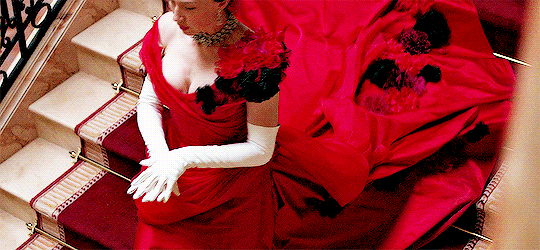
This is a new set of posts focusing on the period of time stretching from the late 19th century to the early 20th Century right up to the start of WWI.
I'll be going through different aspects of life. This series can be linked to my Great House series as well as my Season post and Debutant post.
Today will be focusing on the rules of clothes with this time period.
A Cut for Every Occasion
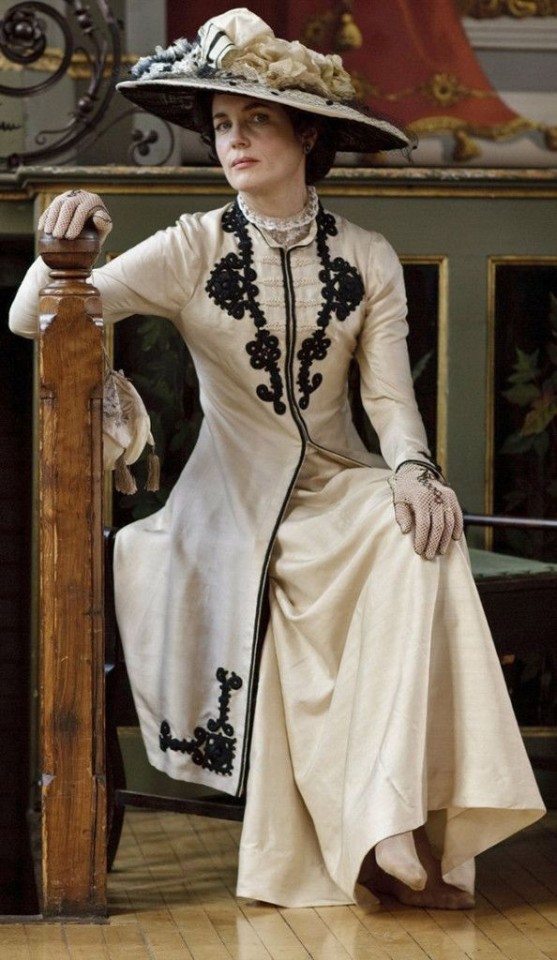
As you may know, the wealthy elite and their servants lived extremely regimented lives and every aspect was governed by careful rules. They would be expected to wear the right outfit at the right time, every minute of the day. Any misstep would be noticed at once and be subject to scruntiny.
In the circles of the elite, one would be expected to change for every occasion. One simply wouldn't wear the same outfit they've been lying around the house in to attend tea at somebody's house. Fashion in this era was dictated by the clock and by the event diary of the wearer.
Ladies

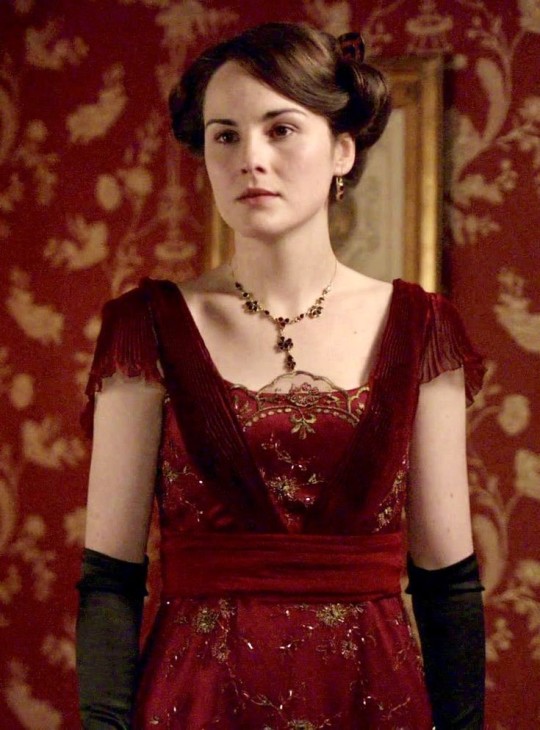
Women of the upperclass would be expected to change at least six times a day. When she would rise for a morning of repose around the house, she would simply wear a house gown or a simple blouse and skirt. If planning a morning stroll, she would change into a walking suit which is a combination of blouse, skirt and jacket along with her hat usually of tweed. If running errands or paying a visit to friends, she would wear another walking suit. If riding, she would wear a riding habit and a hat. If hosting tea or taking tea in her own home, she would change into a tea gown with is a lighter more airier gown more comfortable for chilling in. If attending a garden party, one wears a pastel or white formal day gown accompanied by a straw hat and gloves. For dinner, she would change into an evening gown which would be more elaborate and show off a little more skin than her day wear. After dinner and ready for bed, she would change into her nightgown.
Female servants had an easier time of it. A housekeeper and lady's maid would simply wear a solid black gown for the entire day. A cook and kitchen maids would wear a simple day dress for working with an apron. Housemaids would usually wear a print dress with an apron and cap, changing into the more formal black and white attire you would associate with a maid.
Gentlemen

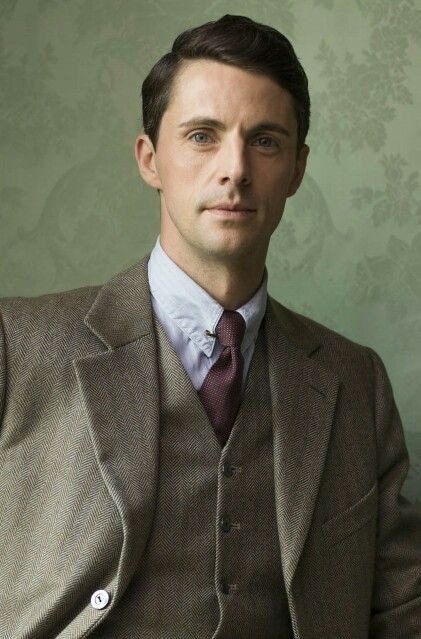
The gentlemen had an easier time but they too were subject to changes throughout the day. Men were expected to wear a suit. The most popular day time suit was a sack suit. These were comprised of plain and loose fitting jackets, worn over a starched shirt with a high collar, waistcoat and straight trousers with ironed creases. These suits were exclusively wool with cheaper ones made of a wool and cotton blend. Grey, green, brown, navy were usual but sine younger men preferred louder colours such as purple which was a trend for a time in the 1910s. These suits were worn about the house or in the city accompanied by a coat. Men would change into tweed if shooting or walking. For garden parties, a gentleman would wear a light coloured suit, usually white and a straw hat. For dinner, a man had two choices: his tails or his dinner jacket. A dinner jacket was for less formal suppers say if dining at home. This was a collection of a jacket, trousers, waistcoat, a bow tie, a detachable wing-collar shirt and black shoes. Lapels of these jackets were edged with silk or satin. Tails were worn at a formal dinner party, at White Tie events. This was made up of a tailcoat, white piqué waistcoat, a starched dress shirt with a pique bib and standing wing collar with a white bow tie. Trousers were lined with trim to hide the seams.
Male servants were soared changing. Footmen would wear their livery around the clock which would resemble white tie to a certain extent or mimic court dress of palace servants. Butler's would wear a variation of a gentleman's evening suit throughout the day. When a male servant is dressed, he usually stays that way. However, a valet or a footman may be taken to pick up during shooting parties where they would wear tweed walking suits.
Jewellery
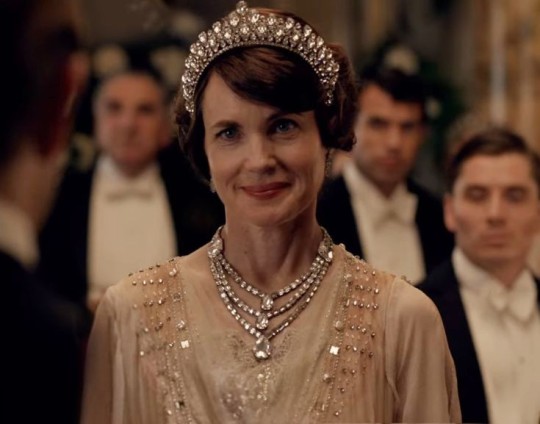
Jewellery was an important sign of status in society. Upperclass women of this time has access to untold caches of sparklers but there were rules concerning their use and meaning. Earrings were usually clip ons as women of high status would not pierce their ears. Simple, understated earrings were worn during the day with more ostentatious sets were worn in the evening time. Broaches were popular at this time, usually worn at the throat of a gown or blouse or walking suit or affixed on hats. Large stoned rings were worn over gloves while slender bands were worn under. Jewellery was intricate and understated amongst old money whole the nouveau riche went for chunkier stones and larger settings. Tiaras were only worn at White Tie events, held after six pm and almost never by unmarried girls. One would not wear a larger tiara than that most senior lady present. Men would wear tie pins, cufflinks and pocket watches to match any occasion be it for a jaunt on the town or at a formal evening party.
Hats
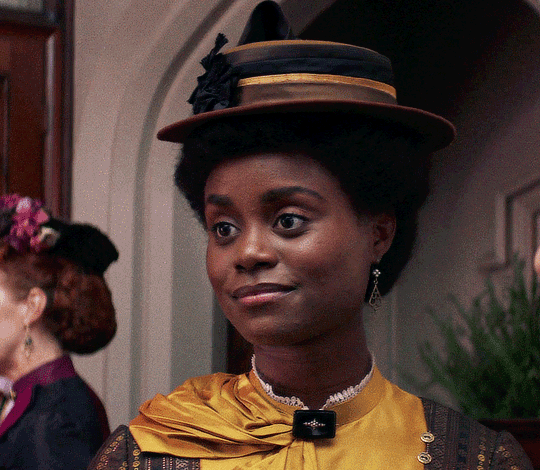
Hats were a staple in this period. Anybody respectable from any class wouldn't venture out of the door without a hat.
Men would wear hats when heading out but always remove them when entering a building, and never wear one without removing it for the presence of a lady. The bowler was seen as more a servant's headwear while a top hat was reserved for gentlemen. Flat caps would be only seen on gentlemen at shooting gatherings or in the country, they were popular among the common class for any informal occasion.
Women had more stricter rules concern hats. Hats for women were more a day accessory worn while out and about. A woman would not wear a hat in her own home even when entertaining and nor would any of the other female occupants if joining the gathering. A woman would not remove her hat when attending a luncheon or tea or any activity. Hats were held in place by a ribbon or sash tied under the chin or by a hat pin, which is essentially a large needle thrust through the hair. This was the period where women's hats became more ornate and rather large, leading to some critisism. Among servants, housekeepers and lady's maids would not wear a hat while indoors and working but a housemaid or cook or kitchen maid would cover their hair with a cap with housemaids changing into a more elaborate one come evening time. Male servants would not wear hats unless travelling or outdoors.
Gloves

Gloves are a staple in this period and worn only at the opportune time. Among servants, only footmen would wear gloves and usually only when serving. Butlers would never wear gloves. Female servants did not wear gloves.
Men did wear gloves, usually woollen or leather while outside or riding gloves when out on horseback.
Women wore gloves whenever outside. Day gloves were usually wrist length, with evening gloves stretching to the elbow. During dinner, evening gloves would be removed at the first course and laid across the lap, replaced at the last course when the ladies leave for tea and coffee after where the gloves are then removed again. Gloves are always worn when dancing and at the theatre or opera. If one is sitting in ones box and sampling some chocolate, one can remove their gloves for that.
Hair and Makeup
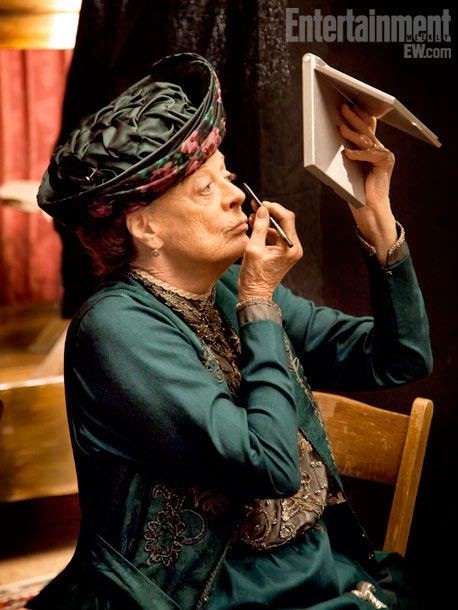
Make up was a no-no amongst the upper crust and for their servants in England and America, as it was seen as licentious but in France, the use of rouge was accepted. Perfume and cologne were acceptable but excessive use was frowned upon.
Hair was dressed by one's lady's maid. Bouffant updos were popular in this time period for married women. During the last years of this period, women began adopting the 'bob' but this was seen as radical and sometimes scandalous. Unmarried girls could wear their hair down, often with accessories like a bow to adorn their tresses. Servants would always tie up their hair and never be seen with it down or uncovered (though this depended on their job).
Men would comb their hair, slicking it back for dinner. Most men were clean shaven but if they wore beards, they were usually well groomed. Hair was kept short for grown men and teenagers but young boys may wear their hair longer whilst in the nursery.
#This bitch loooonnnnggg#Etiquette of the Edwardian Era and La Belle Époque series#Fantasy Guide#Early 20th Century#late 19th century#Great houses#writing#writeblr#writing resources#writing reference#writing advice#ask answered questions#writing advice writing resources#writers#Writing advice writing references#Writing references#Historical fiction#1900s#1890s#Fashion
581 notes
·
View notes
Text
The flower bloomed and faded. The sun rose and sank. The lover loved and went. And what the poets said in rhyme, the young translated into practice.
- Virginia Woolf, Orlando
#quotes#books#literature#lit#classics#academia#light academia#dark academia#chaotic academia#book#book quotes#quotation#Virginia Woolf#Orlando#Historical Fiction#Queer#LGBT+#Fiction#Fantasy
276 notes
·
View notes
Text
It occurs to me that as much as Ed wants to be able to be vulnerable and not have it used against him, Stede wants the same thing. He was bullied as a child and bullied as a man, and his reaction was to retreat into his fantasies where he was tough and strong, embodied in pirates. He tries to make those fantasies into reality and finds that he really doesn't want to commit the kind of violence that he would have to "to be like Blackbeard," then learns that "Blackbeard" is actually an unhappy man named Ed searching for a better, kinder life and identity.
But Stede still wants to be able to defend himself. He wants to protect people he loves. He also wants to be able to cry openly and be gentle and kind and not be mocked for it. He finds that with his crew, who at first think he's ridiculous and then will do anything for him because he'll do anything for them. Then he finds it with Ed, who embodies all the masculine attributes that Stede wanted to find in himself, but who also badly wants softness and kindness without fear of pain.
Stede is entirely able to be vulnerable with Ed. He can play games with him and not be laughed at, and tell stories and be listened to, and say the softest things like how he loves "breathing the same air" and Ed will just smile and melt. It takes them a little while to get there, but it's so lovely that Stede finds someone who will be disappointed when he stops talking and who loves him for all the things he thought he had to conceal about himself.

(gif by @kiwistede)
#ofmd s2#ofmd#our flag means death#stede bonnet#edward teach#blackbonnet#gentlebeard#ofmd meta#rhys darby#taika waititi#having male characters who are genuinely kind and are allowed to remain kind is far too rare#especially in fantasy and historical fiction#i'm sure this has all been observed before but i just love the little guy
260 notes
·
View notes
Text

𝐌𝐄𝐃𝐈𝐄𝐕𝐀𝐋 𝐖𝐀𝐑𝐅𝐀𝐑𝐄, 𝐋𝐎𝐕𝐄𝐅𝐀𝐑𝐄, 𝐏𝐄𝐀𝐂𝐄 𝐀𝐍𝐃 𝐌𝐎𝐑𝐄 𝐐𝐔𝐎𝐓𝐄𝐒
All quotes here have been taken from different sources of media, literature, television, movies and more regarding medieval or period drama quotes in the context of those stories, some might work on more modern setting but these were made with the intention of medieval and fantasy settings. Change names, pronouns and locations as you see fit.
I just wish he'd have the decency to say whatever he came to say in front of his wife.
His wife should track him like a bloodhound.
Let him who knows who he is be no other but himself.
Seduction, as you know by now, for women starts with the ears and for men starts with the eyes.
She is my friend, and there is nothing you can say or do that can stop me from helping her.
You seem a might bit distracted this evening. Is something the matter?
History belongs to those who write it.
But I have never lost faith... even if the world turned upside down I could still find you.
Some mistakes are bound to be repeated.
Do you plan on marrying Charles?
This is a time of change. This is a time of enormous power.
Do you understand the meaning of the soil beneath your feet?
The other Clans will soon arrive. The greatest times of our family are before us. And so are the darkest.
Tonight must be our secret. Swear it.
You pander to her. You spoil her. You make such a fuss over her when she tantrums. This is what happens when you raise a child like that.
I´ve always wanted him to love me the way I loved him.
We were arrogant and naive, thinking we knew what we felt then was love.
A man´s desire is a powerful thing. It can reduce a strong man to nothing. When he sees a woman who fascinates him, he will give up everything for her.
You are like a golden rose, a rare bloom but no less lovely.
So, you see, you're not the only ones who have lost someone. War doesn't discriminate, Petra.
What you think is indecent, I do to my wife every morning before breakfast. There is no such thing as indecent between a husband and a wife. The only thing indecent is a cold marriage bed.
The earl and I...We were... not intimate.
He fought in the war. He might fall apart, fly off the handle, go off the rails.
Mr. Russell, don’t you think I’m too young for you?
To be humiliated so publicly. I don't know. I never wished him ill.
He wasn’t quite what you’d hoped for, was he, Mother dear?
It is easier to start a war than to end it.
All I am guilty of is surviving, and for that, I will not apologize.
There is no law that gods must be fair, Achilles.
How many times can a heart be shattered and still be pieced back together?
She succeeds because she is loved and respected.
I have waited to see you again when none believed that you should ever return; I would have waited for ever.
Your lips are calling for me.
This is your home now. You're one of us, and we take care of our own.
You have a spine of steel and fire in your eyes, Rosalie.
I've never met anyone as kind as you are.
A little taste before the wedding, Jayden?
God’s given you to me, and as soon as He allows, I’ll claim you as my own.
I brought you something. It gets cold in Nashville in the wintertime.
It seems you want me at your mercy, Princess. The question is why?
I am a slave in your palace.
To speak my truth, even if my voice shakes.
What would you say if I asked to kiss you?
Will you allow me to kiss you?
Do I have a choice? Doesn’t it happen with or without our consent? Falling in love, that is.
I have the power, and you will obey me.
You’re a lady. It’s written all over you.
It is amazing what a woman can do if only she ignores what men tell her she can't.
I am not a besotted fool. If you think to jilt me, think again.
It's all my fault. He was trying to save me.
All things in Fiji are paid for in blood.
I have not forgotten that I am a Norman, nor the responsibilities that I bear.
I swear I will be a lady worthy of our family name, worthy of England, and worthy of my conscience.
Being set apart is lonely, until you find purpose.
My faith has promised me to me to my king.
I want your reputation... I want everything you have.
Remember when I told you I would marry none but a warrior, Collector?
I want you to be the father of my child, yes, more than any other man in the world.
I am the flesh of your flesh, and you are the heart of my heart.
My father fought against the infidels during the last crusade. It cost him his life.
Grace saves us, but is not grace beautiful? I think it must be full womanly, even, to draw men in, and to give us a second birth.
Marriage is less about love and more about who is right.
A woman's life is never a fairy tale ... neither is war.
You're not made of kings, boy, but of common clay.
I'm Uther's daughter and sole heir: Morgan Pendragon.
Who better than you, King Lot, my father's strongest opponent.
If we forge a union, we'd have the strength to unite the realm. As King and Queen.
Ambition for its own sake is worthless.
Uther's daughter, Arthur's sister. You can't be defined by others. People need to know you for yourself.
The past doesn't matter. Define yourself in the present, and you might rule in the future.
We are going to build a land full of hope and honor where fear is extinguished, to which people will flock from far and wide, seeking out our beacon of light.
With a little luck, in time, you might fall in love with him. And if you don't, before you know it,he'll give you children, and then you'll love them.
Well, the most enticing aspect for any man is the forbidden. But you'll just have to forego the looks from men other than your husband.
What exactly do you think I'm capable of?
To forget myself. To lose the world for a moment.
One rumour of my death, and you proclaim a new leader! A king could get offended.
If she takes the crown, I'll tell you what you get. Fear!
You have no rights in this kingdom anymore.
#meme#roleplay memes#sentence meme#( cali meme. )#rp memes#rp prompt#rp musings#roleplay prompt#◟ ⋆ memes › roleplay sources.#medieval meme#historical fiction meme#fantasy meme#medieval fantasy meme
136 notes
·
View notes
Text
Not sure what my motive is here, but . . .
The results will not affect which books I post about, because I actually have to want to read them, but I'm dying to know who likes to suffer!
#please i really wanna see the discourse!#book recommendations#queer books#polls#queer#literary tropes#literary fiction#fantasy books#romance books#science fiction books#historical fiction#books#queer community
212 notes
·
View notes
Text
So here's one of the coolest things that has happened to me as a Tolkien nut and an amateur medievalist. It's also impacted my view of the way Tolkien writes women.
Here's Carl Stephenson in MEDIEVAL FEUDALISM, explaining the roots of the ceremony of knighthood:
"In the second century after Christ the Roman historian Tacitus wrote an essay which he called Germania, and which has remained justly famous. He declares that the Germans, though divided into numerous tribes, constitute a single people characterised by common traits and a common mode of life. The typical German is a warrior. [...] Except when armed, they perform no business, either private or public. But it is not their custom that any one should assume arms without the formal approval of the tribe. Before the assembly the youth receives a shield and spear from his father, some other relative, or one of the chief men, and this gift corresponds to the toga virilis among the Romans--making him a citizen rather than a member of a household" (pp 2-3).
Got it?
Remember how Tolkien was a medievalist who based his Rohirrim on Anglo-Saxon England, which came from those Germanic tribes Tacitus was talking about?
Stephenson argues that the customs described by Tacitus continued into the early middle ages eventually giving rise to the medieval feudal system. One of these customs was the gift of arms, which transformed into the ceremony of knighthood:
"Tacitus, it will be remembered, describes the ancient German custom by which a youth was presented with a shield and a spear to mark his attainment of man's estate. What seems to the be same ceremony reappears under the Carolingians. In 791, we are told, Charlemagne caused Prince Louis to be girded with a sword in celebration of his adolescence; and forty-seven years later Louis in turn decorated his fifteen-year-old son Charles "with the arms of manhood, i.e., a sword." Here, obviously, we may see the origin of the later adoubement, which long remained a formal investiture with arms, or with some one of them as a symbol. Thus the Bayeux Tapestry represents the knighting of Earl Harold by William of Normandy under the legend: Hic Willelmus dedit Haroldo arma (Here William gave arms to Harold). [...] Scores of other examples are to be found in the French chronicles and chansons de geste, which, despite much variation of detail, agree on the essentials. And whatever the derivation of the words, the English expression "dubbing to knighthood" must have been closely related to the French adoubement" (pp 47-48.)
In its simplest form, according to Stephenson, the ceremony of knighthood included "at most the presentation of a sword, a few words of admonition, and the accolade."
OK. So what does this have to do with Tolkien and his women? AHAHAHAHA I AM SO GLAD YOU ASKED. First of all, let's agree that Tolkien, a medievalist, undoubtedly was aware of all the above. Second, turn with me in your copy of The Lord of the Rings to chapter 6 of The Two Towers, "The King of the Golden Hall", when Theoden and his councillors agree that Eowyn should lead the people while the men are away at war. (This, of course, was something that medieval noblewomen regularly did: one small example is an 1178 letter from a Hospitaller knight serving in the Latin kingdom of Jerusalem which records that before marching out to the battle of Montgisard, "We put the defence of the Tower of David and the whole city in the hands of our women".) But in The Lord of the Rings, there's a little ceremony.
"'Let her be as lord to the Eorlingas, while we are gone.'
'It shall be so,' said Theoden. 'Let the heralds announce to the folk that the Lady Eowyn will lead them!'
Then the king sat upon a seat before his doors and Eowyn knelt before him and received from him a sword and a fair corselet."
I YELLED when I realised what I was reading right there. You see, the king doesn't just have the heralds announce that Eowyn is in charge. He gives her weapons.
Theoden makes Eowyn a knight of the Riddermark.
Not only that, but I think this is a huge deal for several reasons. That is, Tolkien knew what he was doing here.
From my reading in medieval history, I'm aware of women choosing to fight and bear arms, as well as becoming military leaders while the men are away at some war or as prisoners. What I haven't seen is women actually receiving knighthood. Anyone could fight as a knight if they could afford the (very pricy) horse and armour, and anyone could lead a nation as long as they were accepted by the leaders. But you just don't see women getting knighted like this.
Tolkien therefore chose to write a medieval-coded society, Rohan, where women arguably had greater equality with men than they did in actual medieval societies.
I think that should tell us something about who Tolkien was as a person and how he viewed women - perhaps he didn't write them with equal parity to men (there are undeniably more prominent male characters in The Lord of the Rings and The Hobbit, at least, than female) but compared to the medieval societies that were his life's work, and arguably even compared to the society he lived in, he was remarkably egalitarian.
I think it should also tell us something about the craft of writing fantasy.
No, you don't have to include gut wrenching misogyny and violence against women in order to write "realistic" medieval-inspired fantasy.
Tolkien's fantasy worlds are DEEPLY informed by medieval history to an extent most laypeople will never fully appreciate. The attitudes, the language, the ABSOLUTELY FLAWLESS use of medieval military tactics...heck, even just the way that people travel long distances on foot...all of it is brilliantly medieval.
The fact that Theoden bestows arms on Eowyn is just one tiny detail that is deeply rooted in medieval history. Even though he's giving those arms to a woman in a fantasy land full of elves and hobbits and wizards, it's still a wonderfully historically accurate detail.
Of course, I've ranted before about how misogyny and sexism wasn't actually as bad in medieval times as a lot of people today think. But from the way SOME fantasy authors talk, you'd think that historical accuracy will disappear in a puff of smoke if every woman in the dragon-infested fantasy land isn't being traumatised on the regular.
Tolkien did better. Be like Tolkien.
#tolkien#middle earth#jrr tolkien#lord of the rings#lotr#the lord of the rings#eowyn#writing fantasy#fantasy#female characters#writing#historical fiction#medieval women#medieval history#medieval#history#womens history
8K notes
·
View notes
Text

You are the hated bastard child of the Imperial Family of the Hwaryeon Empire. 'Cursed' since birth, everyone only spoke of your name in fear and disgust.
Well, you were...Until you 'died' two years ago.
Now, you've returned as an experienced, renowned exorcist, on your way to save your (used-to-be) kingdom from the upcoming peril.
Will you let go of the past and forgive your people for their past misdeeds? Or will you watch as your kingdom falls at the impending doom?

Customize your MC: name, gender, appearance, personality, and more.
4 romance options; all of which are gender selectable.
Save your people...Or watch them grovel at your feet for forgiveness. It’s up to you.
Demo | Masterlist | Character Portraits

Lee Do Hyun (M/F) The Spouse
The cunning first child of a well-known merchant family. They first met you when you were still a powerless nobody, and they were the one who raised you to be the person you are today. They were the one to provide your position on the throne, yet the person to pull you to your demise. Oh, and did I mention they are your ex-spouse?
Baek Yeon (M/F) The Guard
A skilled swords(wo)man that was unfortunately appointed to become your personal guard since young. They 've known you since childhood and has always stood up for your honor. No matter what others say about you, they've remained fiercely loyal to you. Even through all the hardships, the gentle smile and kind eyes they show you never seemed to change. Perhaps those kind eyes hold a deeper depth of affection than you might've expected.
Haram (M/F) The Mystery
A demon that was subjected to hate ever since their birth. They've been searching for ways to be loved and to feel love, yet every person they turn to for guidance only seem to be set out to kill them. Eventually, they've come to the conclusion that the only way that they'd be able to achieve their goal is to become human, but their determination seems to get replaced with conflicting emotions whenever they see you.
Hwang Yi Rang (M/F) The Friend
An orphaned child who, in the end, grew up to become an experienced exorcist. They also happen to be the person who happened to find you after your 'death' and the person you trained alongside under the same mentor. They've first approached you with an open mind and cheerful grin, paying no attention to the rumors of you, and ever since then, you two eventually grew to become the best exorcist duo within the nation.
896 notes
·
View notes
Text
Webcomic day!
I never miss an opportunity to plug my own comic, so you can read Bybloemen here!
What's this about, you say? In the 1630s, the Dutch came down with tulip mania, and enterprising florists looking to make a quick buck produced a speculative bubble that was forerunner of the Beanie Baby craze of the 90s or the NFT market of...last year.
Enter two devils, hellbent on convincing the residents of a backwater port town to stake their fortunes and souls on a promising bulb. And also invest in a potential pharmaceutical scandal, read questionable religious tracts, and possibly adopt a pug of great ambitions and ill repute.
If historical fantasy comics are your thing, you might also enjoy these (extremely excellent stories):
Hans Vogel is Dead
Alexander, the Servant, and the Water of Life
Obelisk
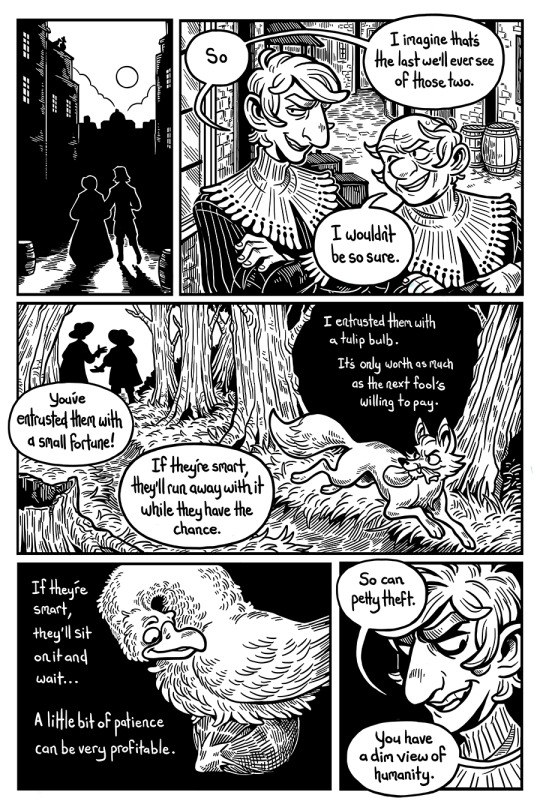

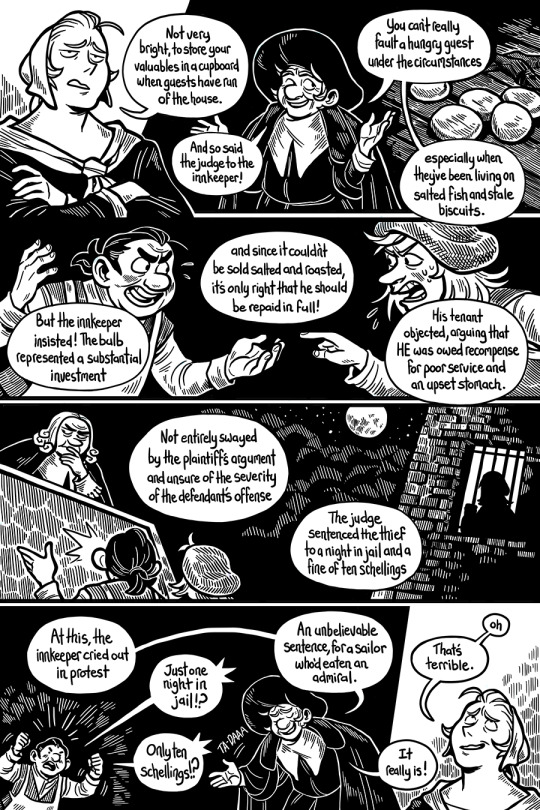

#bybloemen#hiveworks#webcomics#devils#historical fantasy#demons#tulipmania#tulips#17th century#historical fiction
77 notes
·
View notes